As a pet owner, I understand the importance of providing enriching activities for solitary pets. These furry companions rely on us to meet their mental and physical needs, and incorporating enrichment into their daily routines is crucial for their overall well-being and happiness. By tailoring enrichment activities to their specific needs, we can ensure that our solitary pets lead fulfilling lives.
Key Takeaways:
- Enrichment activities are essential for the mental and physical well-being of solitary pets, helping to prevent boredom and reduce unwanted behaviors.
- By providing a stimulating environment and engaging in various activities, we can ensure our solitary pets lead happy and fulfilling lives.
- Tailor enrichment activities to meet the specific needs and preferences of each individual pet.
- DIY enrichment ideas, including homemade toys, can provide mental stimulation for solitary pets.
- Commercial enrichment toys such as interactive feeders and puzzle toys are great options to keep solitary pets engaged and entertained.
The Importance of Enrichment for Your Solitary Pet
Enrichment plays a critical role in the well-being of solitary pets, providing them with essential mental stimulation and physical exercise. Just like humans, animals need a variety of activities to keep their minds sharp and their bodies healthy. By incorporating enrichment into their daily routines, pet owners can ensure that their solitary pets lead fulfilling lives.
Enrichment activities allow solitary pets to engage in natural behaviors and fulfill their instincts. Through mental stimulation and physical exercise, these activities prevent boredom and the development of behavioral problems. Without enrichment, solitary pets may become anxious, frustrated, or even exhibit destructive behaviors.
Implementing a stimulating environment for solitary pets is essential. It means creating an environment that encourages exploration, problem-solving, and engagement. This can include providing toys, puzzles, and interactive feeders that challenge their cognitive abilities. Additionally, incorporating physical exercise through playtime or outdoor activities helps keep their bodies active and healthy.
“Enrichment is not a luxury but a necessity for solitary pets.”
Enrichment is not a luxury but a necessity for solitary pets. It is my responsibility as a pet owner to ensure that my furry companion receives the mental and physical stimulation they need for optimal well-being.
Furthermore, the benefits of enrichment extend beyond preventing boredom. They contribute to the overall happiness and contentment of solitary pets. When they are mentally stimulated and physically active, they experience a sense of fulfillment and satisfaction, leading to a better quality of life.
Providing enrichment for solitary pets is an ongoing commitment. It requires creativity, patience, and a deep understanding of the specific needs of each pet. By taking the time to tailor enrichment activities to their preferences and capabilities, pet owners can ensure that their solitary pets live the best possible lives.
The Benefits of Enrichment for Solitary Pets:
- Prevents boredom and destructive behaviors
- Stimulates natural instincts and behaviors
- Enhances cognitive abilities and problem-solving skills
- Promotes physical activity and exercise
- Boosts overall happiness and well-being
| Enrichment Ideas | Description |
|---|---|
| Interactive Puzzle Toys | These toys require the pet to figure out how to get a treat or toy hidden inside, providing mental stimulation and engagement. |
| Food-Dispensing Toys | These toys release small amounts of food as the pet plays and interacts with them, motivating them to engage in physical activity. |
| Hide-and-Seek Games | Playing hide-and-seek with treats or toys helps stimulate the pet’s natural hunting instincts while providing mental and physical exercise. |
| Scent Games | Using the pet’s sense of smell, scent games encourage them to search and find hidden treats, providing mental stimulation. |
DIY Enrichment Ideas for Solitary Pets
If you’re looking to provide mental stimulation for your solitary pet, DIY enrichment activities can be a great solution. Not only do they save money, but they also allow you to tailor the toys and activities to your pet’s specific needs and preferences.
Creating homemade toys using simple items found around the house is a fun and creative way to engage your pet’s mind and prevent boredom. Here are some DIY enrichment ideas for solitary pets:
1. Cardboard Box Maze
A cardboard box maze is an excellent DIY enrichment activity for cats and small dogs. Simply collect a few cardboard boxes of varying sizes and create a maze by cutting holes or doors into them. Arrange the boxes in different configurations and let your pet explore and navigate through the maze. You can even place treats or toys at different points in the maze to encourage exploration.
2. Treat-Dispensing Toys
Transform ordinary household items into engaging treat-dispensing toys. For example, take an empty plastic water bottle and make small holes in it. Fill the bottle with your pet’s favorite treats or kibble, and watch as they figure out how to roll or bat the bottle to retrieve the treats. This not only provides mental stimulation but also encourages physical activity.
3. Sock Stuffed Toy
Give your lonely pet a comfort toy by creating a sock stuffed toy. Fill an old, clean sock with crumpled newspaper or other soft materials, and tie a knot to close the sock. You can enhance the toy by adding a squeaker or some treats inside. This DIY toy can keep your pet entertained for hours, and they can cuddle up to it when they need some comfort.
4. Snuffle Mat
A snuffle mat is a great DIY enrichment tool for dogs. Start by cutting fleece or fabric into long strips. Tie the strips to a rubber mat or grid, creating a snuffling surface. Sprinkle treats or kibble throughout the mat, and watch as your pet uses their nose to hunt for the hidden goodies. This activity engages their sense of smell and provides mental stimulation.
5. Frozen Treats
During hot summer months or as a special treat, DIY frozen treats can provide both mental and physical enrichment. Freeze low-sodium broth or diluted unsweetened fruit juice in ice cube trays. You can also incorporate small pieces of fruit or vegetables for added variety. These frozen treats will keep your pets entertained and hydrated.
| DIY Enrichment Ideas for Solitary Pets | Benefits |
|---|---|
| Cardboard Box Maze | Encourages exploration and problem-solving skills |
| Treat-Dispensing Toys | Provides mental stimulation and promotes physical activity |
| Sock Stuffed Toy | Offers comfort and entertainment for lonely pets |
| Snuffle Mat | Engages dogs’ sense of smell and provides mental stimulation |
| Frozen Treats | Keeps pets entertained and hydrated |
These DIY enrichment ideas are just the beginning. Get creative and think about the items you have on hand that can be repurposed into engaging toys or activities for your solitary pet. They will appreciate the mental stimulation and you’ll enjoy watching them have fun!
Best Enrichment Toys for Solitary Pets
When it comes to providing mental and physical stimulation for solitary pets, commercial enrichment toys play a vital role. These toys are specially designed to engage pets, keeping them entertained and mentally stimulated. Here are some of the best enrichment toys for solitary pets:
1. Interactive Feeders
Interactive feeders are a great way to slow down mealtime while keeping solitary pets mentally engaged. These feeders have various compartments or puzzles that pets must manipulate to access their food. By requiring pets to work for their meals, interactive feeders provide mental stimulation and prevent eating too quickly, reducing the risk of digestive problems.
2. Puzzle Toys
Puzzle toys are excellent for stimulating a pet’s problem-solving skills. These toys have hidden compartments or puzzles that pets must solve to retrieve treats or toys. Puzzle toys come in different difficulty levels, allowing pet owners to choose the appropriate challenge for their pets. They encourage critical thinking and provide mental exercise, keeping solitary pets entertained for hours.
3. Treat-Dispensing Balls
Treat-dispensing balls are interactive toys that hold treats or kibble. Pets need to roll or play with the ball to release the treats, creating a fun and rewarding experience. These toys encourage physical activity and mental stimulation as pets chase and manipulate the ball to access the treats inside.
By incorporating these enrichment toys into a pet’s daily routine, pet owners can provide mental and physical stimulation while preventing boredom. The interactive nature of these toys ensures that solitary pets stay engaged and entertained, leading to a happier and more fulfilling life.
| Enrichment Toy | Benefits |
|---|---|
| Interactive Feeders |
|
| Puzzle Toys |
|
| Treat-Dispensing Balls |
|
Enrichment Games & Activities for Solitary Pets
Enrichment games and activities are essential for providing both mental stimulation and physical exercise to solitary pets. These activities help keep them engaged, prevent boredom, and contribute to their overall well-being. Here are some enriching games and activities that you can try with your furry friend:
1. Hide-and-Seek Games with Treats
Hide-and-seek games are an excellent way to stimulate your pet’s mind and tap into their natural hunting instincts. Hide treats or their favorite toys around the house and encourage them to find them. This game engages their senses and provides mental stimulation as they use their nose to track down the hidden treasures.
2. Scent Games Using Their Sense of Smell
Scent games are a fantastic way to provide mental stimulation for solitary pets. You can create a scent trail using treats or a specific scent, such as lavender or a familiar object like a worn t-shirt. Allow your pet to follow the scent and reward them with treats or praise when they find the target.
3. Solo Fetch Games with a Ramp or Automatic Ball Launcher
Solitary pets can still enjoy a game of fetch, even without a human companion. Set up a ramp or use an automatic ball launcher to throw the ball for your pet. This activity provides physical exercise and keeps them entertained as they chase after the ball.
Remember to adjust the difficulty level of these games based on your pet’s abilities. Start with simpler challenges and gradually increase the complexity to keep them challenged and engaged.
Providing enrichment games and activities for solitary pets not only keeps them mentally stimulated and physically active but also strengthens the bond between you and your furry friend. Incorporate these activities into their daily routine to ensure they lead a fulfilling and contented life.
| Benefits of Enrichment Games and Activities for Solitary Pets | Examples |
|---|---|
| 1. Mental Stimulation | Hide-and-seek games |
| 2. Physical Exercise | Solo fetch games with a ramp or automatic ball launcher |
| 3. Bonding | Engaging in interactive games with your pet |
Different Types of Enrichment for Solitary Pets
When it comes to providing enrichment for solitary pets, there are a variety of options to consider. To ensure the overall well-being of your pet, it’s important to offer a combination of physical exercise activities and mental stimulation. Let’s explore the different types of enrichment that can keep your solitary pet engaged and entertained.
Physical Exercise Activities
Physical exercise is vital for the health and happiness of solitary pets. Engaging in activities that allow them to burn off energy and stay fit not only promotes physical well-being but also helps prevent behavioral issues caused by boredom. Consider the following physical exercise activities for your pet:
- Swimming: If your solitary pet enjoys being in the water, swimming can be an excellent form of exercise. It not only provides a full-body workout but is also gentle on the joints.
- Agility Courses: Setting up an agility course in your backyard or enrolling your pet in agility classes can be a fantastic way to challenge them both physically and mentally. It involves obstacles such as jumps, tunnels, and weave poles.
- Interactive Play Sessions: Engaging in interactive play sessions with your pet using toys like balls, frisbees, or tug ropes can help them stay active and strengthen the bond between you.
Mental Stimulation Activities
Mental stimulation is just as important as physical exercise for solitary pets. Keeping their minds engaged and challenged helps prevent boredom and can curb destructive behaviors. Try incorporating the following mental stimulation activities into your pet’s routine:
- Puzzle Toys: Puzzle toys are designed to mentally challenge pets by requiring them to problem-solve to access treats or toys hidden inside. These toys not only keep them occupied but also provide a rewarding and enriching experience.
- Scent Games: Solitary pets have a keen sense of smell, and engaging in scent games can tap into this natural ability. Hide treats or toys around the house or use scent puzzles to stimulate their sense of smell and provide mental stimulation.
- Training Sessions: Teaching your solitary pet new commands or tricks through training sessions not only stimulates their minds but also strengthens the bond between you. Mental exercise through training can tire them out just as much as physical exercise.
By incorporating both physical exercise activities and mental stimulation activities into your solitary pet’s routine, you can provide them with a fulfilling and enriching experience. Remember to tailor the activities to your pet’s individual needs and preferences.
| Physical Exercise Activities | Mental Stimulation Activities |
|---|---|
| Swimming | Puzzle Toys |
| Agility Courses | Scent Games |
| Interactive Play Sessions | Training Sessions |
Conclusion
Enrichment activities are essential to promote the mental and physical well-being of solitary pets. By providing a stimulating environment and engaging in a variety of activities, pet owners can ensure that their furry companions lead happy and fulfilling lives.
Enrichment activities offer numerous benefits for solitary pets. They help stimulate their minds, alleviate boredom, and prevent the development of unwanted behaviors. By tailoring enrichment activities to meet the specific needs and preferences of each individual pet, owners can ensure that their pets stay mentally engaged and physically active.
Remember to incorporate a combination of physical and mental enrichment activities. Physical exercise, such as swimming or interactive play sessions, helps keep pets fit and healthy. Mental stimulation activities, such as puzzle toys or scent games, challenge their minds and prevent mental stagnation.
So, whether it’s DIY enrichment ideas, commercial toys, or interactive games, providing enrichment activities for your solitary pet is a crucial part of their overall well-being. By dedicating time and effort to enrich their lives, you can ensure that your beloved pet leads a happy, healthy, and full of joy.
FAQ
Why is enrichment important for solitary pets?
Enrichment is crucial for solitary pets as it provides them with the necessary mental and physical stimulation, prevents boredom, and helps reduce unwanted behaviors.
What are some DIY enrichment ideas for solitary pets?
DIY enrichment ideas include creating homemade toys using items found around the house, such as cardboard boxes, toilet paper rolls, and old clothes. These toys can be filled with treats or spread with peanut butter to keep pets engaged and entertained.
What are the best enrichment toys for solitary pets?
The best enrichment toys for solitary pets include interactive feeders, puzzle toys, and treat-dispensing balls. These toys can be filled with treats or kibble, requiring pets to work for their food and providing mental stimulation.
What are some enrichment games and activities for solitary pets?
Enrichment games and activities for solitary pets can include hide-and-seek games with treats, scent games using their sense of smell, or even solo fetch games using a ramp or an automatic ball launcher. These activities help keep pets engaged and prevent boredom.
What are the different types of enrichment for solitary pets?
The different types of enrichment for solitary pets include physical exercise activities such as swimming, agility courses, or interactive play sessions. Mental stimulation activities can include puzzle toys, scent games, or training sessions. It’s important to offer a combination of physical and mental enrichment for the overall well-being of solitary pets.

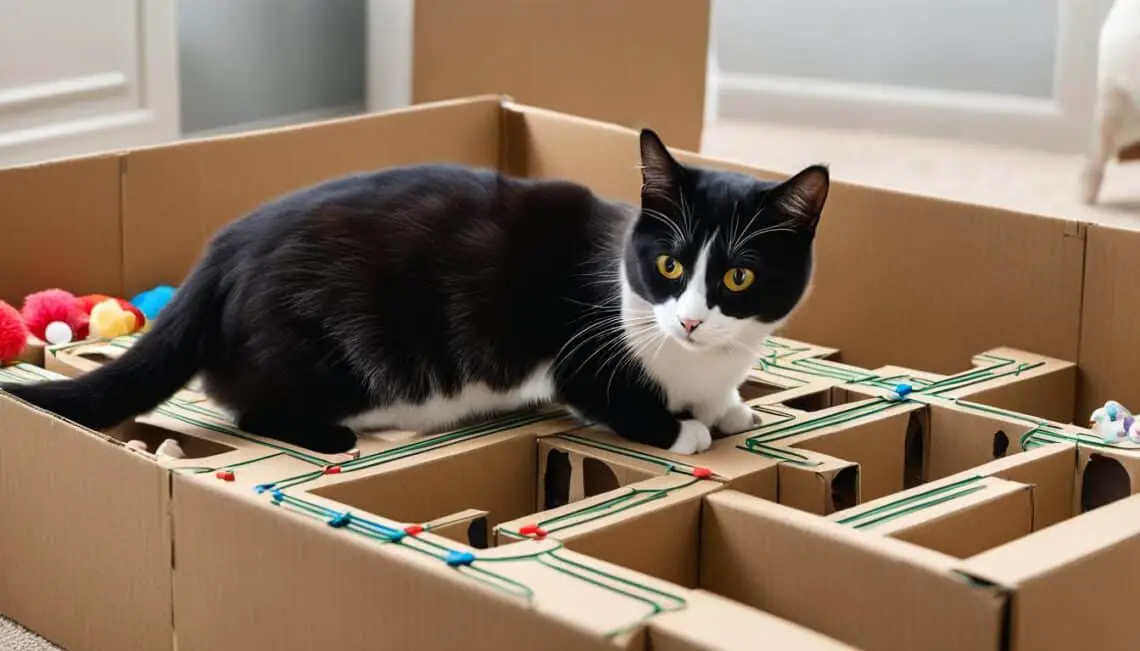
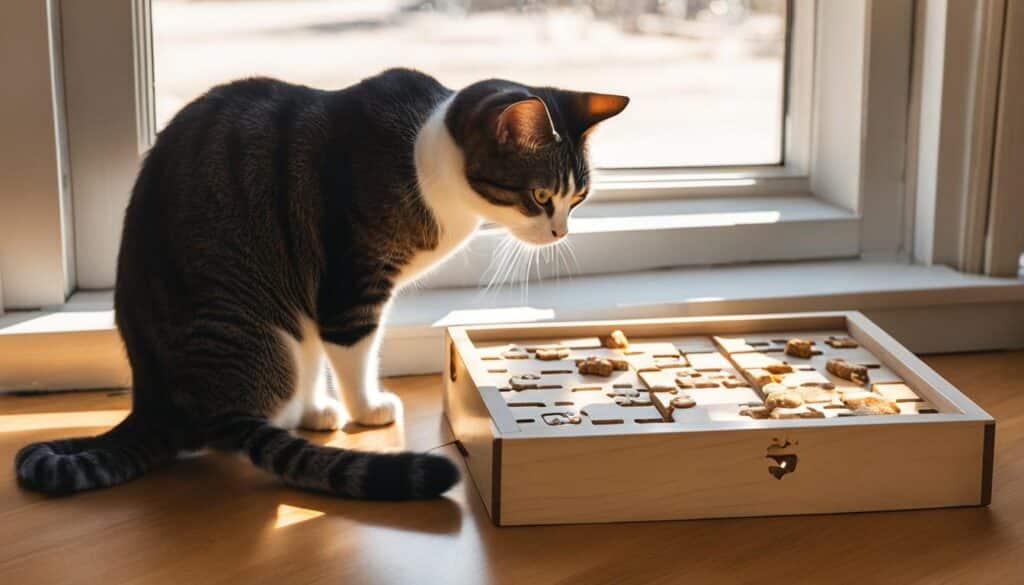
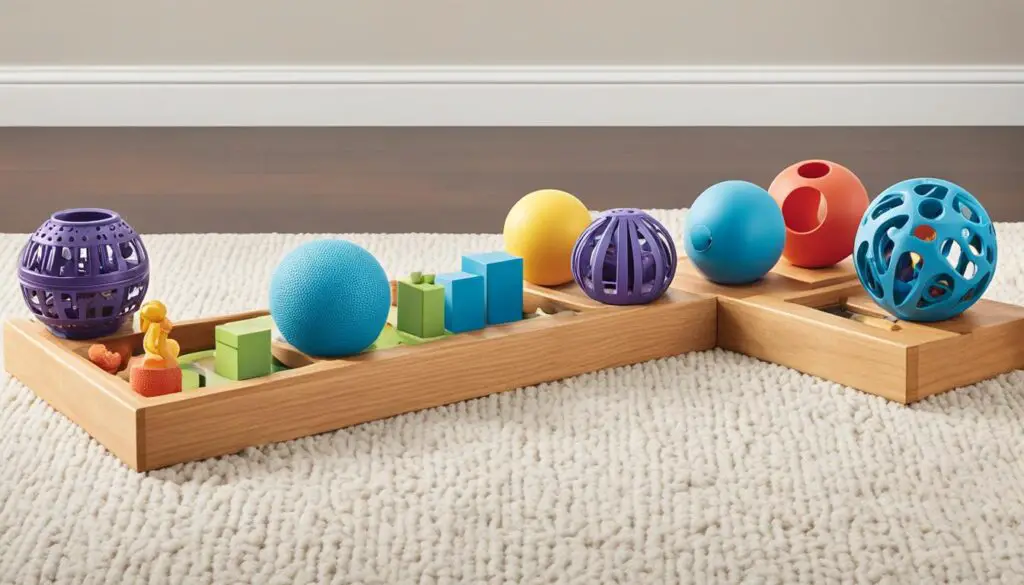
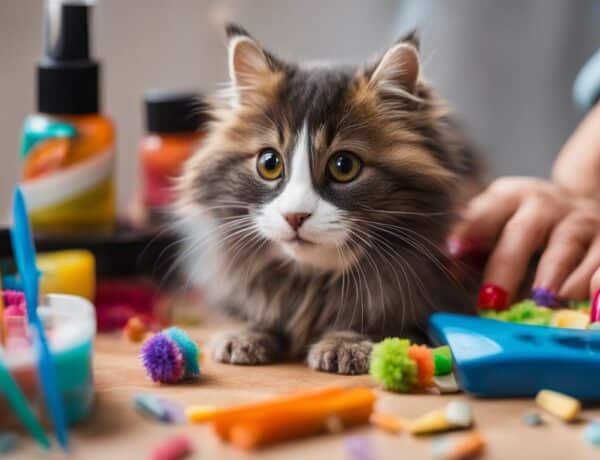
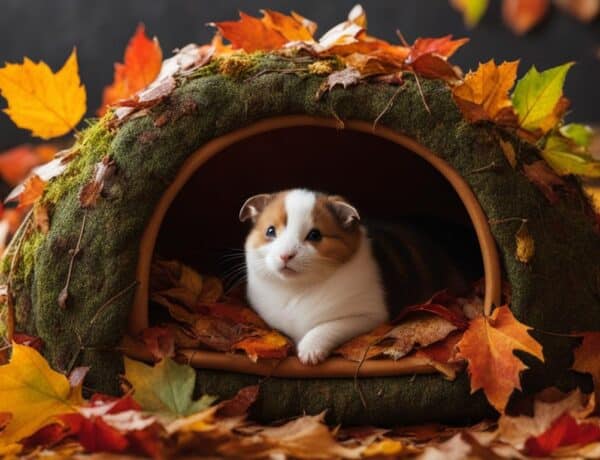

No Comments